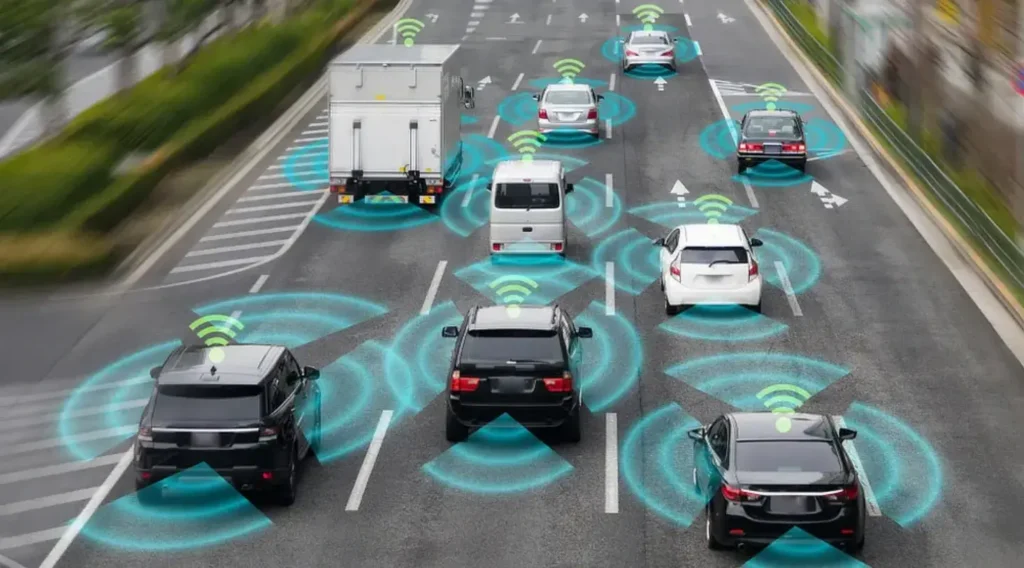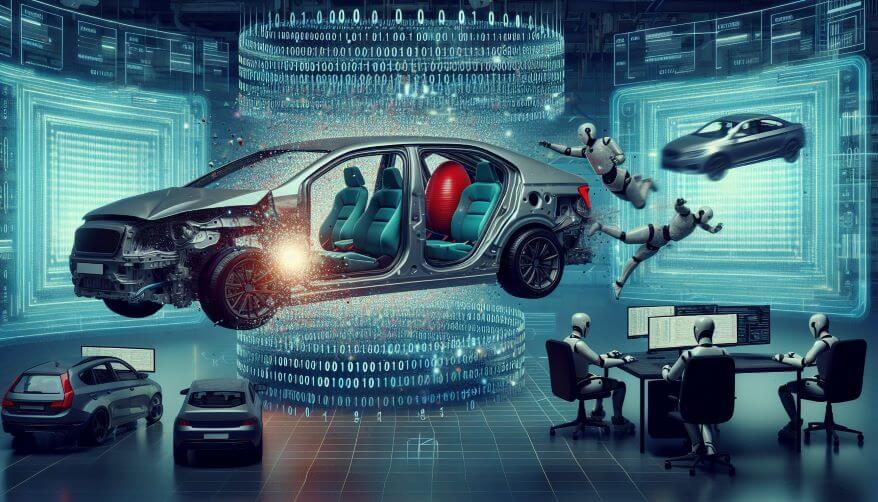Technology is reshaping how we drive, and crash prevention systems powered by artificial intelligence (AI) are at the heart of this transformation. Once limited to seatbelts and airbags, modern vehicles now actively detect and avoid collisions before they happen. But the big question remains: Do these AI systems actually work?
In this in-depth analysis, we explore how AI crash prevention systems function, what the data says about their effectiveness, and whether drivers can truly rely on them for safer roads in 2025.
Introduction to AI Crash Prevention Systems
Vehicle safety has evolved from passive to proactive defense mechanisms. Instead of simply protecting occupants during a crash, modern systems aim to prevent the crash altogether.
Artificial intelligence makes this possible by:
- Interpreting real-time sensor data
- Predicting risky scenarios
- Taking preventive action autonomously
AI’s role in crash prevention is no longer experimental—it’s operational in millions of cars worldwide.
How AI-Powered Crash Prevention Systems Work
AI systems rely on a blend of hardware and software, combining:
- Cameras for vision-based object detection
- Radar and LiDAR for depth and range sensing
- Ultrasonic sensors for close-proximity awareness
- Central AI processors that interpret data and trigger responses
These components work in unison to detect:
- Sudden stops
- Lane departures
- Approaching vehicles
- Pedestrians and cyclists
The system processes this information in milliseconds, often responding faster than a human driver can.
Types of AI Crash Prevention Features
Here are some of the most common AI-driven safety features:
| Feature | Function |
|---|---|
| Forward Collision Warning (FCW) | Alerts driver to an impending collision |
| Automatic Emergency Braking (AEB) | Brakes the car automatically to avoid or reduce impact |
| Lane Departure Warning (LDW) | Alerts when drifting from lane without signaling |
| Blind Spot Detection (BSD) | Warns if a vehicle is in the driver’s blind spot |
| Rear Cross Traffic Alert | Detects traffic while reversing out of parking spots |
Each of these systems uses AI to identify threats, assess urgency, and initiate corrective actions when needed.
Real-Time Obstacle Detection and Avoidance
One of AI’s greatest strengths is its ability to recognize and classify objects with precision. AI can distinguish between:
- A pedestrian and a mailbox
- A stationary car and a moving truck
- A clear lane and one with road debris
This is achieved through:
- Computer Vision Algorithms: Interpret images from onboard cameras
- Sensor Fusion Models: Combine data from multiple inputs for a 360° view
- Deep Learning Networks: Continuously learn from millions of real and simulated scenarios
Predictive Driving and Behavior Modeling
AI doesn’t just react—it anticipates.
- Predictive AI monitors other drivers’ speed, position, and patterns to forecast potential hazards
- It adjusts vehicle speed, lane position, or alerts the driver before danger becomes imminent
- AI systems even learn from a driver’s personal habits to fine-tune their responses
This proactive intelligence is a game-changer for urban, highway, and low-visibility driving conditions.
Effectiveness of AI Crash Prevention: What the Data Shows
According to NHTSA and IIHS studies, vehicles equipped with AI-powered crash avoidance features have shown:
- 🚗 50% reduction in front-to-rear crashes
- ⚠️ 27% fewer lane departure incidents
- 💥 41% lower rate of pedestrian injuries
Insurance companies report reduced claim frequency among vehicles with AI safety tech, and automakers like Subaru and Volvo show statistically higher safety ratings across models featuring advanced AI assistance.
Case Studies of Success in Real-World Scenarios
🚘 Tesla:
- Uses vision-based AI for real-time crash prediction and emergency braking.
- Internal data shows a ~40% reduction in rear-end collisions with Autopilot active.
🚘 Volvo:
- Introduced pedestrian and cyclist detection systems powered by neural networks.
- Swedish crash data shows almost zero fatalities in newer Volvo models with full AI safety suites.
🚘 Subaru EyeSight:
- Combines stereo cameras with AI for lane assist and pre-collision braking.
- Achieved a 61% reduction in injury-causing crashes in IIHS tests.
These examples prove that AI crash prevention systems are more than just buzz—they’re saving lives every day.
Limitations and Failure Scenarios
While AI crash prevention systems are highly effective, they’re not infallible. Some limitations include:
🚧 Common Failure Scenarios:
- Edge Cases: Unusual events (e.g., a mattress flying off a truck) that AI hasn’t encountered in training.
- Poor Visibility: Heavy rain, snow, or fog may block camera or LiDAR input.
- Sensor Blind Spots: Low-profile obstacles or unexpected angles may confuse AI.
- Driver Overreliance: Some drivers misunderstand the tech, assuming full autonomy when it’s only assistive.
These edge cases highlight the need for ongoing AI training, driver education, and human override options.
AI System Testing and Safety Certification
Before deployment, AI crash prevention systems undergo extensive testing and certification:
🔍 Key Safety Benchmarks:
- ISO 26262: Functional safety standard for automotive electronics
- ISO/PAS 21448 (SOTIF): Ensures safety even in the absence of system faults
- Euro NCAP and NHTSA Ratings: Evaluate real-world performance in crash prevention
- Simulation and On-Road Testing: AI systems are trained on billions of driving miles (real and synthetic)
In 2025, many countries also require automated safety reporting and fail-safe protocols for AI-equipped vehicles.
Public Trust and User Perception
For AI crash prevention to succeed, drivers must trust it—but also understand its limits.
- Consumer surveys show that while 70% of drivers feel safer with AI safety features, only 45% fully understand how they work.
- Some users disable alerts due to perceived intrusiveness.
- Automakers are responding by improving interface clarity, adding driver education modes, and publishing transparency reports.
Greater trust leads to higher adoption, which results in fewer accidents across entire populations.
Crash Prevention in Autonomous vs Traditional Vehicles
AI crash prevention differs slightly between traditional and autonomous vehicles:
| Traditional Vehicles (ADAS) | Autonomous Vehicles (AVs) |
|---|---|
| Assist the human driver | Replace the human driver |
| Use alerts and emergency braking | Make all driving decisions |
| Require human oversight | May operate independently (Level 4/5) |
| Limited to certain scenarios | Designed for full-route navigation and safety |
In both cases, AI remains central to interpreting risks and preventing accidents, but full AVs rely even more heavily on AI’s predictive and control capabilities.
The Role of Over-the-Air (OTA) Updates in Improving Safety
AI systems don’t remain static—they learn and improve over time. OTA updates allow automakers to:
- Update AI algorithms with new training data
- Add features or improve detection sensitivity
- Fix bugs or recalibrate sensors remotely
This means a vehicle sold in 2024 could have dramatically improved safety performance by 2025, without visiting a dealership.
Integration with V2X Communication for Proactive Avoidance
Crash prevention is even more powerful when paired with V2X (Vehicle-to-Everything) communication:
- V2V (Vehicle-to-Vehicle): Shares position, speed, and braking status with nearby cars
- V2I (Vehicle-to-Infrastructure): Receives alerts from road signs, traffic lights, and smart intersections
- V2P (Vehicle-to-Pedestrian): Detects smartphone signals or wearables to prevent pedestrian collisions
AI analyzes this data in real time to predict risks beyond line of sight, offering a new level of safety intelligence.
Conclusion
Yes—they work exceptionally well. AI crash prevention systems have already proven their ability to reduce accidents, save lives, and improve road safety across a wide range of real-world scenarios. While they’re not perfect, their predictive, reactive, and continuously improving capabilities make them a game-changing leap in automotive safety.
As adoption increases and technology evolves, the roads of 2025—and beyond—will be safer, smarter, and more secure thanks to artificial intelligence behind the wheel.


